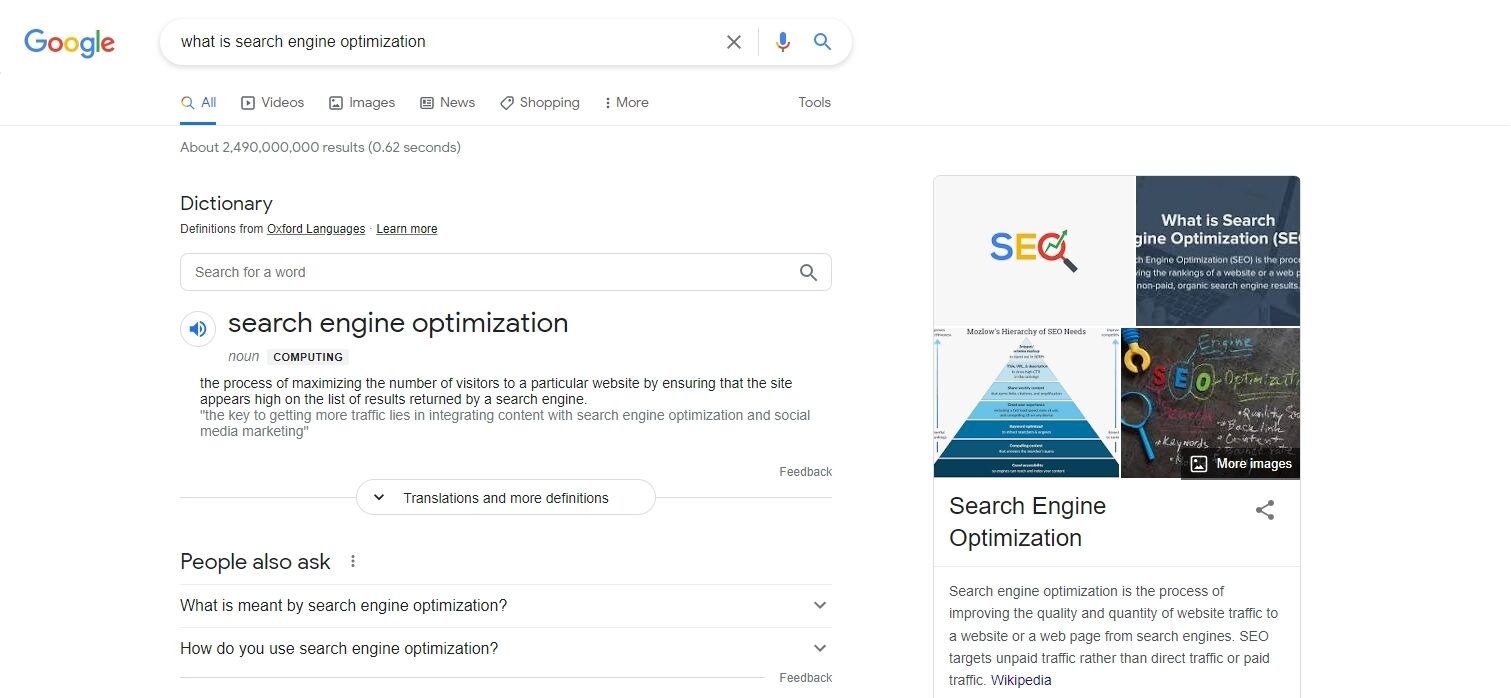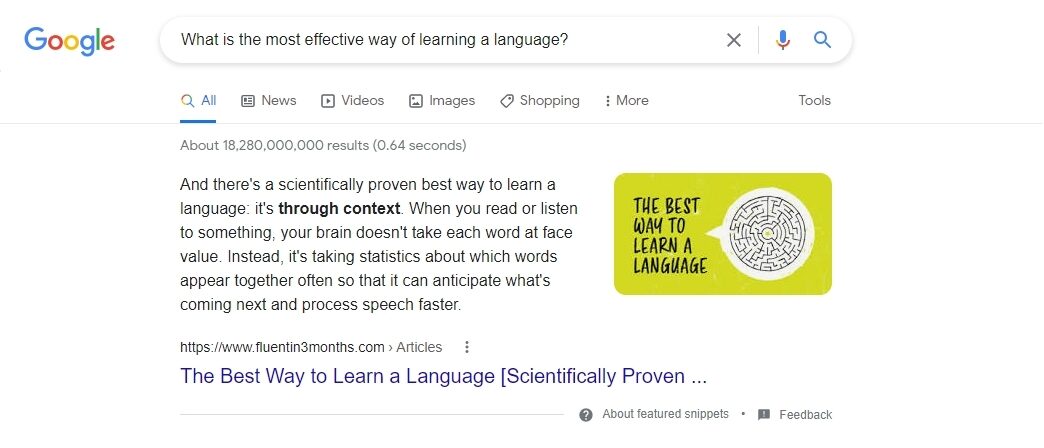What Is Semantic SEO?
30 March 2022
By Sophie Barber
Semantic SEO is the practice of optimising for search engines based on user intent and context, rather than just an individual keyword. The aim is to provide an answer to the user, not just incorporate a specific phrase multiple times.
In this blog, we explore why semantic SEO has become important and how you can use it in your digital marketing strategy.
What is semantic search?
Google has become a far more sophisticated search engine over the years, and it is now capable of contextualising search queries to a greater extent than, say, 10 years ago.
The word semantic relates to meaning in language and semantic search is, therefore, the process by which a search engine provides results based on the meaning of a particular search query, rather than simply returning results that contain that exact phrase.
User intent is particularly important in semantic search, especially now that people search in a more conversational way, using long-tail phrases that are often questions. The search engine will have to decipher the meaning of all those words in relation to one another and understand what the user is asking in order to return the results.
How do you optimise for a semantic search engine?
1. Understand user intent
Accounting for user intent is fundamental when creating an SEO strategy because you want to make sure you are targeting the right keywords for your web pages.
For example, if you are a company that sells furniture online, you will want to target users searching for products with the main category and product pages on your ecommerce store. You will therefore want to research those product categories and understand what terms are used by people who are looking directly to buy products.
For example, if you sell tables, some potential keywords could be, ‘wooden dining tables’ or ‘round dining tables’. People using these short and direct phrases are likely to be looking for products straight away.
However, if you also have a blog, you will want to target users that are asking particular questions relating to the products you sell – the users in an exploration phase. For example, if you sell sofas in a range of fabric choices, you might consider creating content about ‘linen vs velvet sofas’ or ‘which fabric is best for a sofa’.
If you are unsure of the user intent for a particular keyword, the best way to test it is by putting it into Google and seeing the types of web pages that are returned in the search results.
Uses have different reasons for inputting phrases into the search engine and you need to ensure that you are targeting the right ones because Google will return the results that best meet their needs.

Search engine results pages showing the difference between product-focused user intent and question-based user intent.
2. Create topic clusters
Semantic search also recognises that certain phrases are fairly similar and people that use them will likely be looking for the same thing, or that they will be interested in the topic as a whole, as well as just the specific phrase they have used.
Therefore, when you are carrying out keyword research and planning for your website, it is good practice to cluster particular keywords, rather than separating all of them out. This will allow you to distinguish clear topics that you can dedicate to a particular page, and optimise for multiple keywords rather than just one.
3. Create in-depth pieces of content
Particularly when looking to create editorial content, it can be a good idea to create longer pieces that tackle a broader selection of related queries.
An FAQ page, for example, would be a good place to tackle a number of related questions about a particular product or service. Alternatively, you could create a guide to a particular topic such as sofa fabrics, to use the above example, and include a number of relevant user questions within this guide.
Google will understand that these questions make up a topic as a whole and that users may be interested in learning about closely related aspects.
4. Use the ‘People also ask’ feature
One Google feature that will help to guide you when creating longer pieces of content based around a specific topic is the ‘People also ask’ section that appears at the bottom.
This gives an excellent indication of all the related queries your target audience are looking at and gives you the basis to structure your piece by delving into the different related queries.

An example of the ‘People also ask’ section on Google search results.
5. Remember the featured snippet
While creating longer, in-depth pieces of content are great for semantic SEO, answering specific questions within that content with a short and concise snippet will give you the chance to appear as the top answer on Google when people ask a specific question.

An example of the Featured Snippet section on Google search results.
6. Take voice search into account
Another thing to remember when it comes to semantic SEO is that search engines are now also accounting for the rise of voice search – and you should be too.
The featured snippets mentioned above are one of the ways you can start to think about reaching the voice search audience who are asking long-tail questions to their smart devices.
7. Create connections through URL structure and internal linking
One of the methods Google uses for contextualising web pages is how they are crawled. You, therefore, need a logical structure for the content on your website to ensure that it is in a good position to be returned for the correct search query.
Having products or services neatly arranged under the relevant categories, for example, helps provide semantic context to the search engine. This can also be beneficial with blog content – grouping your articles into topics helps to strengthen their relevance in that particular area.
The most important thing to take away when thinking about semantic SEO is that Google wants to understand human nature and the meaning behind searches. That is why a logical approach to why someone is searching is essential, rather than just thinking about content in the context of fitting in this key phrase a certain number of times.
SB.